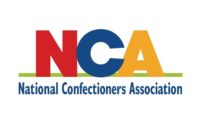HITTING THE SHELVES
NCA Cancels Sweets & Snacks Expo, Releases State of Industry and Strategic Goals
Sweet and Sour

It’s no secret that candies can deliver a sweet or sour taste experience. Similarly, March proved to be both a sweet and sour month for the National Confectioners Association (NCA).
The organization greeted March with news of its 16-page state of the industry report, “Sweet Insights: State of Treating 2020,” as well as its five-year strategic plan. By late March, however, the nation’s coronavirus pandemic forced NCA to cancel its 2020 Sweets & Snacks Expo set for May 18-21 in Chicago.
Convention planning aside, NCA says the industry continues to be a bright spot in the economy. Using 52-week IRI sales tracking data (ending December 29, 2019), NCA said annual retail dollar sales of chocolate, candy, gum and mints rose by 2.4% to $37.5 billion in 2019—constituting the fourth largest category across food retail channels.
State of Treating insights include:
• Chocolate is the largest of the three segments across channels, with strong dollar gains in 2019 in sugar-free, seasonal and smaller pack sizes. Non-chocolate had the strongest dollar performance. Powerhouse chewy candy generated half of sales, with many other areas contributing to growth, including seasonal non-chocolate. Combined gum and mints were back in positive territory.
• About two-thirds of consumers pay attention to one or more callouts when purchasing chocolate and candy. Consumers across all demographics are increasingly paying attention to the use of artificial colors, flavors and sweeteners, preferring the use of natural ingredients. Other areas that capture their attention include organic, gluten-free and vegan claims, with key generational differences in the extent to which they are seeking these attributes.
NCA’s State of Treating report was released against the backdrop of a newly established strategic plan for the association. Titled “Thrive in 2025,” the new strategic plan sets the direction of the association during the next five years. The plan sets new goals for NCA, including strengthening its advocacy and communications capabilities, identifying the disruptive trends of the future, and developing positive and meaningful thought leadership.
Looking for a reprint of this article?
From high-res PDFs to custom plaques, order your copy today!





